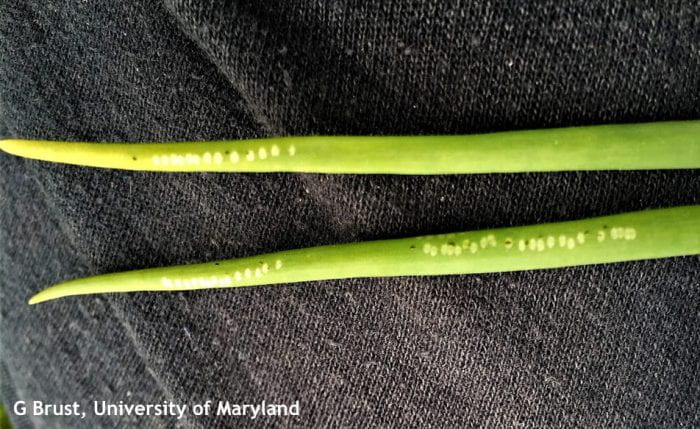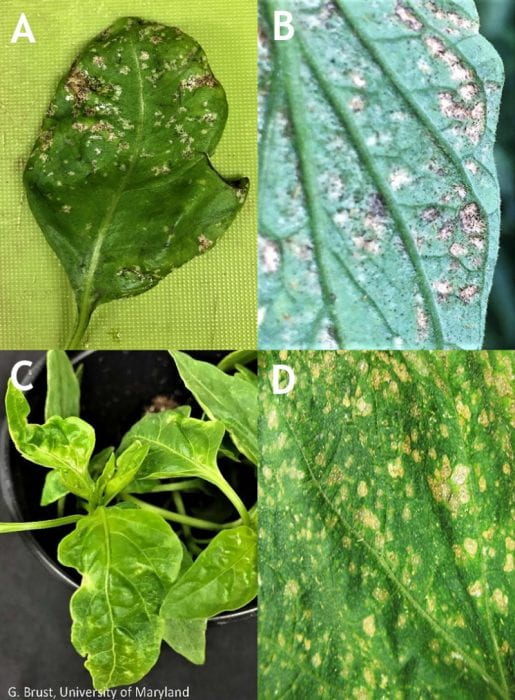– Jerry Brust, IPM Vegetable Specialist, University of Maryland; jbrust@umd.edu
Allium leaf miner (ALM) and thrips damage are being reported from many different crops. I have talked about both these pests in previous articles and will not go into any great detail now but will point out a few things.
Allium LM damage to bulbs is being reported in onions, leeks and surprisingly garlic. In the past garlic was not hit that hard in Maryland, but this spring it was. Adult ALM are no longer active in Maryland so there should be no more ovipositing into Alliums for the summer. In late August through the fall the adults will become active again and any Allium plants that are out at this time will need to be covered or watched for the white dots on leaf foliage (Fig. 1) caused by the female’s ovipositor. If the white spots appear 2-3 insecticide applications are needed to reduce bulb damage and plant decline with each application being 2 weeks apart from one another.

Figure 1. White dots on onion blades made by Allium leaf miner females
Thrips are being reported causing damage to squash, basil, beans, cucumber, watermelon, tomato, pepper, onions, and flowers grown for bouquets (Fig. 2). They seem to be coming from several different areas of the farm such as the crop itself, cover crops and waterways. If you have widespread thrips damage (on many different crops) or you have applied Entrust or a pyrethroid or neonic several times and still have thrips problems you need to switch to another IRAC group (such as Torac, a.i. tolfenpyrad, I mention this chemical because it can be used on a wide variety of crops–but be sure to check the label for the crops it can be used on–and growers report it gives them good control) or possibly horticultural oils for a couple of sprays. The oils will not completely control the thrips but they will help reduce their populations and the oils make for a good break from chemical controls. Oils can be used if temperatures are at or below 85°F and the relative humidity is below 90%. Do not mix with or apply oils before or after sulfur or copper applications because of possible phytotoxicity problems.

Figure 2. Thrips feeding damage to: A-basil, B-tomato, C-pepper, D-cucumber
